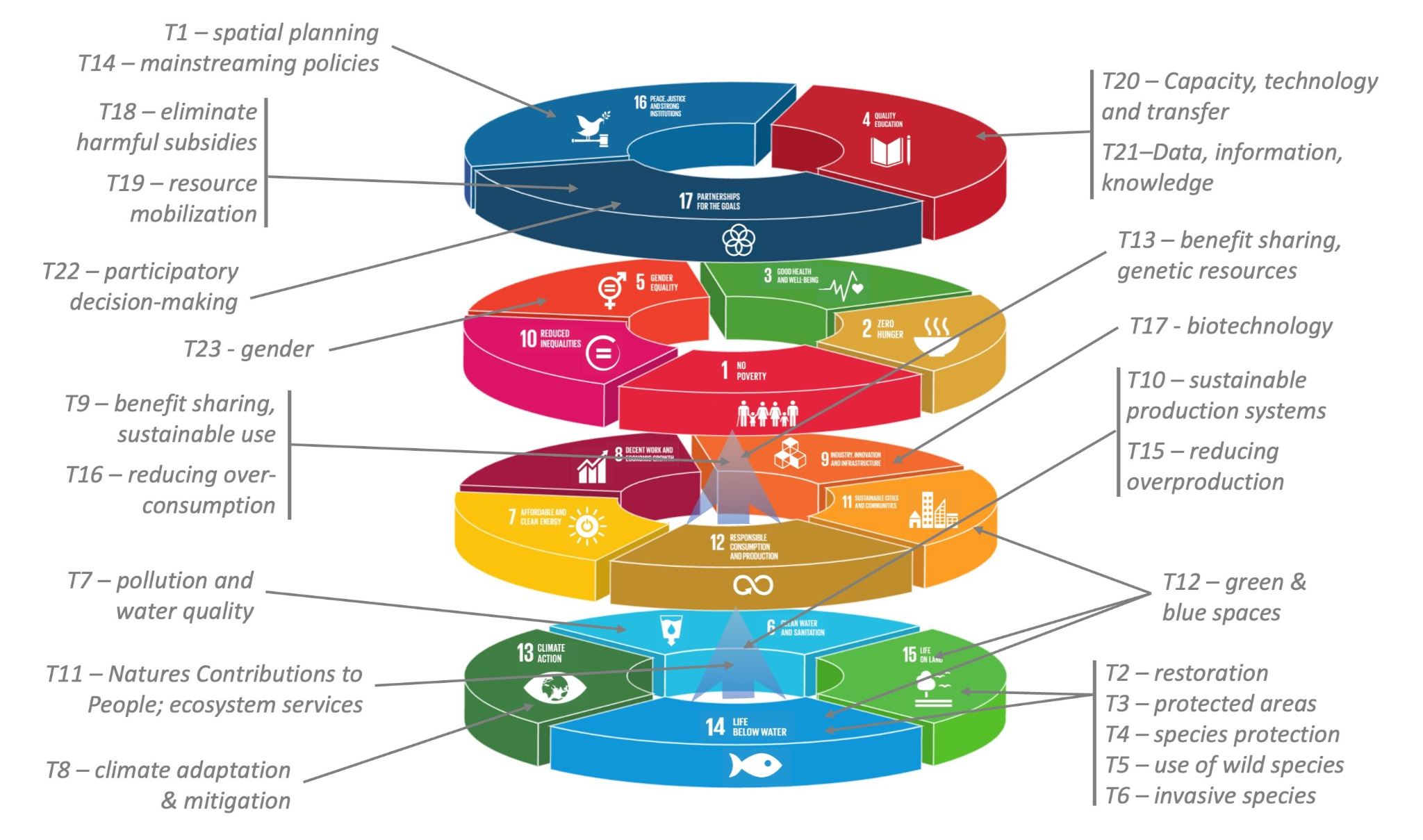Biodiversity & Environment
Implementing Kunming-Montreal Global Biodiversity Framework
- 25 Oct 2023
- 7 min read
For Prelims: Kunming-Montreal Global Biodiversity Framework (KMGBF), Intergovernmental Science-Policy Platform on Biodiversity and Ecosystem Services (IPBES), Sixth Assessment Report of the Intergovernmental Panel on Climate Change (IPCC-AR 6), Conference of the Parties (COP), Convention on Biological Diversity (CBD).
For Mains: Impact and relevance of Kunming-Montreal Global Biodiversity Framework on conservation of environment and nature.
Why in News?
Recently, the 25th meeting of the Subsidiary Body on Scientific, Technical and Technological Advice (SBSTTA-25) in Nairobi, Kenya concluded with recommendations aimed at facilitating the transition from agreement to action following the adoption of the Kunming-Montreal Global Biodiversity Framework (KMGBF) in December 2022.
- The meeting primarily focused on creating a progress monitoring mechanism, while also addressing the implications of assessments conducted by the Intergovernmental Science-Policy Platform on Biodiversity and Ecosystem Services (IPBES) and the Sixth Assessment Report of the Intergovernmental Panel on Climate Change (IPCC AR6), among other matters.
What is Subsidiary Body on Scientific, Technical and Technological Advice (SBSTTA)?
- Article 25 of the Convention on Biological Diversity establishes an open-ended intergovernmental scientific advisory body known as the Subsidiary Body on Scientific, Technical and Technological Advice (SBSTTA).
- Its purpose is to provide the Conference of the Parties (COP) and, as appropriate, its other subsidiary bodies, with timely advice relating to the implementation of the Convention.
What Was the Recent SBSTTA-25 Meeting About ?
- IPBES Reports on Invasive Species and Biodiversity Valuation:
- The recent IPBES report has highlighted the critical role that invasive species play in driving the extinction of plants and animals. Additionally, the Methodological Assessment Report on Diverse Values and Valuation of Nature, as well as the Thematic Assessment Report on the Sustainable Use of Wild Species, were discussed.
- These findings shed light on the intricate relationship between biodiversity and the impact of invasive species.
- IPCC AR6 Findings on Biodiversity and Climate Change:
- The findings from the IPCC AR6 report were also a focal point of discussion. The report underscores that climate change is the primary driver of biodiversity loss and emphasizes the capacity of biodiversity to support climate adaptation, resilience, mitigation, and disaster risk reduction.
- This connection between biodiversity and climate change has significant implications for global environmental management.
- Converging Crises
- During the meeting, experts recognized that biodiversity loss, climate change, ocean acidification, desertification,land degradation, invasive alien species, and pollution are interconnected crises.
- Recommendations:
- To address these challenges coherently and effectively, the group finalized 15 key points for presentation at the 16th meeting of the Conference of the Parties (COP16) to the Convention on Biological Diversity (CBD).
- This approach aligns with the goals of the Convention, the Kunming-Montreal Global Biodiversity Framework, and other global initiatives such as the United Nations Framework Convention on Climate Change and the 2030 Agenda on Sustainable Development.
- Moreover, the meeting emphasized the importance of utilizing the work of other multilateral agencies, including the World Health Organization and the Food and Agriculture Organization, to enhance scientific and technical guidance in implementing the Kunming-Montreal Global Biodiversity Framework.
What is Kunming-Montreal Global Biodiversity Framework?
- About:
- The Kunming-Montreal Global Biodiversity Framework (GBF) was adopted during the fifteenth meeting of the Conference of the Parties (COP)-15 of CBD following a four year consultation and negotiation process.
- This historic Framework, which supports the achievement of the Sustainable Development Goals and builds on the Convention’s previous Strategic Plans, sets out an ambitious pathway to reach the global vision of a world living in harmony with nature by 2050.
- 30 by 30 Target:
- The declaration made a reference to the '30 by 30' target which is a key proposal being debated at the COP15, that would afford 30% of the Earth’s land and oceans protected status by 2030.
- Main Targets:
- The framework consists of four goals for 2050 and 23 targets for 2030.
- The four goals are:
- Conserve and restore biodiversity.
- Ensure sustainable use of biodiversity.
- Share benefits fairly and equitably.
- Enable transformative change.
- The 23 Targets are:

- The four goals are:
- The framework consists of four goals for 2050 and 23 targets for 2030.
Kunming Biodiversity Fund
- China has also pledged to inject USD 233 million into a new fund to protect biodiversity in developing countries. The fund is being referred to by China as Kunming Biodiversity Fund.
- Further, some rich country donors say a new fund for conservation is unnecessary because the United Nations’ Global Environment Facility already helps developing nations finance green projects.
UPSC Civil Services Examination, Previous Year Questions (PYQs)
Q. “Momentum for Change: Climate Neutral Now” is an initiative launched by (2018)
(a) The Intergovernmental Panel on Climate Change
(b) The UNEP Secretariat
(c) The UNFCCC Secretariat
(d) The World Meteorological Organisation
Ans: (c)
Q. What is/are the importance/importances of the ‘ United Nations Convention to Combat Desertification' ? (2016)
- It aims to promote effective action through innovative national programmes and supportive international partnerships.
- It has a special/particular focus on South Asia and North Africa regions, and its Secretariat facilitates the allocation of major portions of financial resources to these regions.
- It is committed to a bottom-up approach, encouraging the participation of local people in combating the desertification.
Select the correct answer using the code given below:
(a) 1 only
(b) 2 and 3 only
(c) 1 and 3 only
(d) 1, 2 and 3
Ans: (c)




